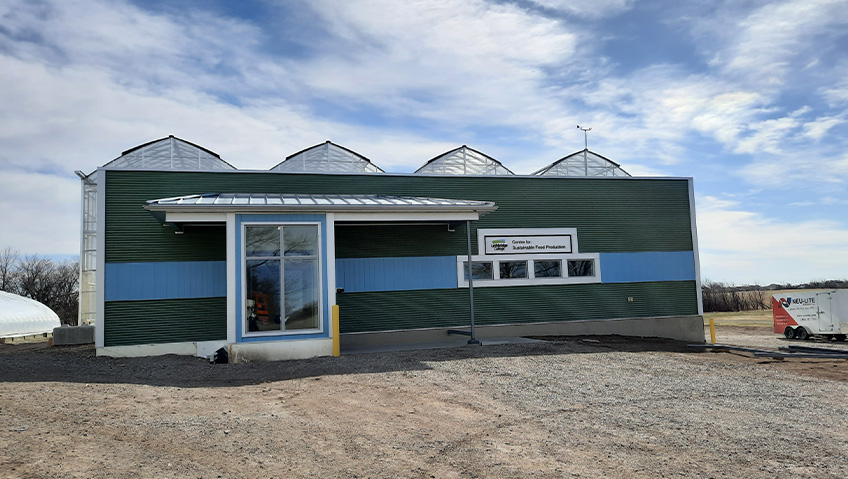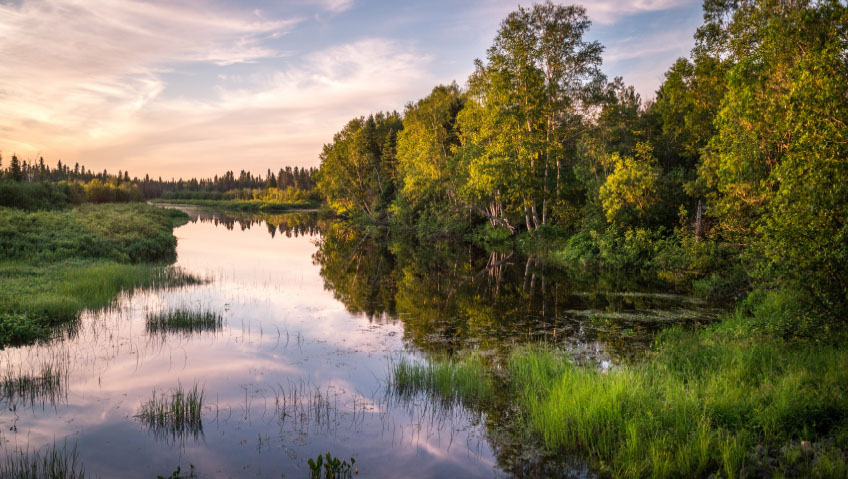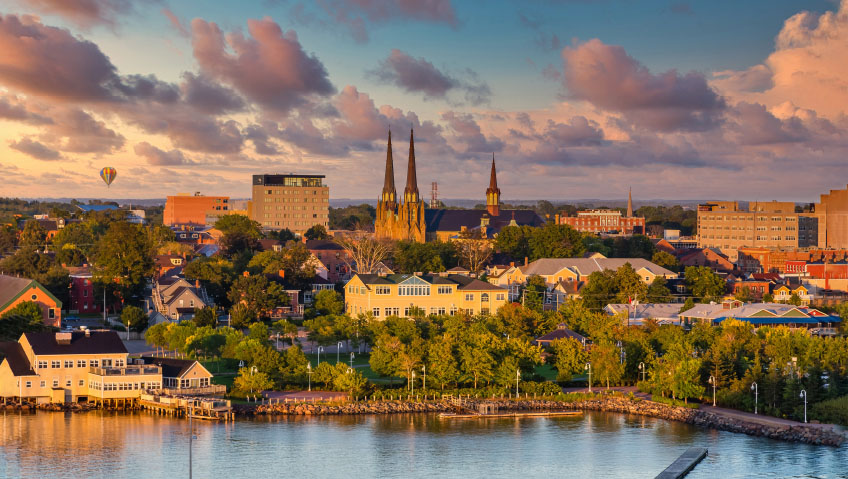The Alberta Aquaculture Association is dedicated to promoting aquaculture and its related practices in Western Canada. The association has been promoting environmentally friendly technologies, like aquaponics, to produce fish. Aquaponics is an integrated food production method that combines aquaculture (breeding and raising fish in a farm-like ecosystem) and hydroponics (cultivating plant life without soil, using water-based nutrients).
In Alberta, aquaponics research began in 1994, when the association started its first experiments in growing fish and underwater crops under the guidance of then-President Mark McNaughton. Dr. Nick Savidov, a senior research scientist at Lethbridge College in Lethbridge, Alberta, credits the association with enabling him and others to engage in aquaponics projects over the years. Dr. Savidov’s aquaponics project at the college began in 2015 at the behest of the Natural Sciences and Engineering Research Council of Canada. At that time, he occupied the head position of the greenhouse research program with the Alberta Agriculture department.
The department was given the task of running projects in aquaponics, especially using fish water to grow vegetables, and so got involved with provincial aquaculture specialist Eric Hutchings, who played a great role in establishing the association itself.
“Eric believed that… aquaponics was a technology… which was viable both technically and economically,” Dr. Savidov recalls. In his experience, the association played the role of initiator into the research like what he and Hutchings were doing, and it is still considered an important player in aquaculture and aquaponics development.
Dr. Savidov cites the triploid grass carp project at Lethbridge College from the ‘90s through 2015 as one of the association’s most notable projects in its early years. It undertook the project with the partnership of the Aquaculture Centre of Excellence (ACE), which itself is part of the Integrated Agriculture Technology Centre at Lethbridge College. The project was intended to supply the industry with sterile grass carp to control aquatic vegetation in irrigation channels and dugouts.
Dr. Savidov mentions Clay Boyes as another important figure in the association, as his involvement in the industry led to constructing an aquaculture system to start grass carp and developing Lethbridge as an important industry resource. Another key figure is John Derksen who, along with Boyes, became a major resource for the association by providing important species information through close work with aquaculture specialists like Eric Hutchings, who was later succeeded by Dan Watson in this position.
Lethbridge College’s ACE and Alberta Agriculture worked together with the Alberta Aquaculture Association to tackle problems in aquaculture. They worked to bring new fish species into the local ecosystem by building an isolation / quarantine facility for incoming species to be successfully introduced. This centre was the first of its kind in Alberta and continues to be a great help to the industry, spearheaded by the association.
Recent years have seen more impressive projects being undertaken in Alberta. In 2015, Lethbridge College received a $2 million grant to push research to the next level with Dr. Savidov’s Natural Sciences and Engineering Research Council of Canada aquaponics project. NSERC also funded another project with support from the association, which resulted in developing carbon-based-filtration systems to aid the aquaculture industry in improving water treatment technology.
Dr. Savidov names Dr. James Rakocy of the University of the Virgin Islands as both “the godfather of modern aquaponics,” and a key figure in helping to build the first research aquaponics facility in 2002. This facility was the first in the world to add an innovative reactor technology that can revolutionize waste treatment across multiple industries. The research centre in Brooks, Alberta has also produced the first zero-waste aquaculture system in the world, which is also the first zero-waste food production system.
“Canada has led the way in these developments on a global scale,” Dr. Savidov notes. He feels that the aquaculture industry is facing many challenges as well as many opportunities and admits that so much more is known about fish farming now than was known even a decade ago thanks to the vision and strides made during the lifetime of the Alberta Aquaculture Association.
An ongoing challenge is supply, as fish populations are beginning to vanish, resulting in a greater need for fish farming to provide a valuable protein source to North America. Dr. Savidov lists two ways one can fish, by using net pens in a natural reservoir like a lake or an ocean, or using recirculating aquaculture systems (RAS), which allows for higher density fish catches and does not have limitations on catches produced. Each comes with unique drawbacks, however.
For net pens, there is still an element of pollution as the fish produce waste after they are fed, so some provincial governments across Canada are beginning to put limits on industry expansion by decreasing net pen operation numbers, and this has been a big change in the Canadian aquaculture industry. Although net pens are cheaper to build and operate, the restrictions they are facing make them not ideal.
With RAS, a self-sufficient system can be created with less environmental impact. In these fish production systems fish are produced in separate tanks or raceways and the water is predominantly recycled through the system, having reduced interaction with the natural environment; however, these RAS are far more expensive to build and operate then net pens.
The Alberta Aquaculture Association is very interested in keeping the aquaculture industry alive but acknowledges that there are feasibility issues for both incoming and continuing fish farmers and industry workers. “We are facing a dilemma [with] how we can expand our aquaculture industry,” Dr. Savidov shares, but a potential solution lies in what is called integrated production systems, like aquaponics.
To help offset the cost of a system like RAS, an integrated production system would include other revenue sources for farmers, like producing vegetables through hydroponics that can be sold along with fish and related products. This is a possible answer to help improve the economic feasibility of modern fish farms, an answer that the association has been keeping atop since the early 2000s.
Looking ahead, Dr. Savidov foresees more innovative technologies which will hopefully allow fish to grow with less risk of pollution. “The industry has to adopt these technologies in order to be more sustainable,” he stresses.
He also feels that changing the profile and perception of the industry is important, and this can be achieved by integrating operations and making them more economically efficient for farmers. This trend is already being adopted in Alberta as well as in other provinces like Ontario.
Several big companies involved in fisheries are also interested in this and are becoming more convinced of the benefits of the method. Agriculture, as a whole, is struggling to produce food sustainably, to the point where “we are living at the expense of future generations as it relies mostly on synthetic fertilizers produced using finite resources, such as fossil fuels and rock deposits,” as Dr. Savidov puts it. The recycling of resources such as nitrogen, phosphorous, and potassium, is fast becoming mandatory, which is why aquaculture is using hydroponics to recycle water and nutrients, enabling a more sustainable practice.
The price of fish will likely increase for consumers in the short term, but he points out that it still takes less water to produce fish to eat than red meat, and the fishing industry will be much more sustainable in the future. Throughout the challenges to come, the Alberta Aquaculture Association will continue to stress innovation and development to benefit the aquaculture and aquaponics sectors it has been aiding for nearly thirty years.






